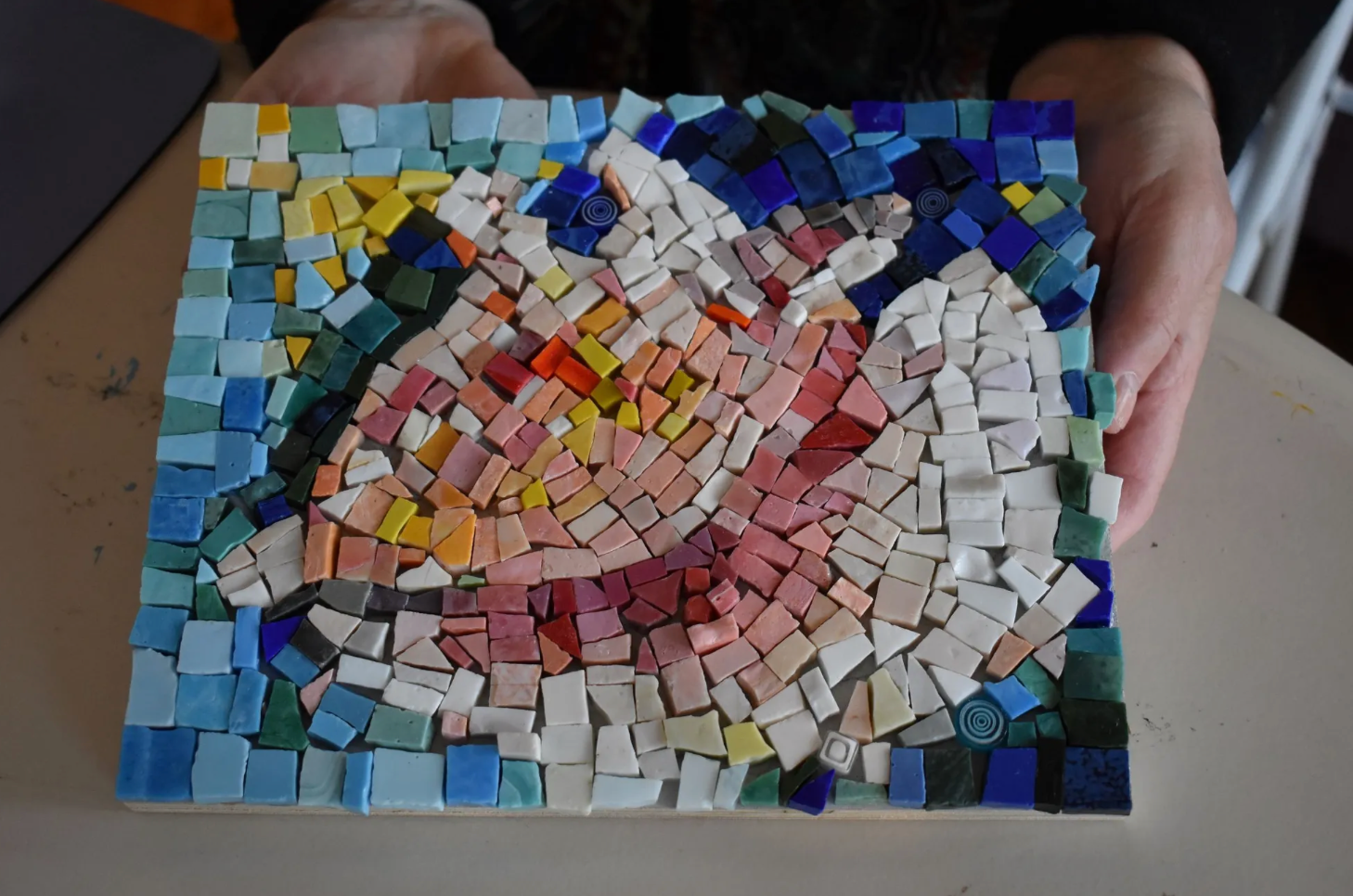Old boxes that offered a new perspective, companion paintings that presented an alternate version of freedom, glass beads that each seemed to encase their own miniature world, and a model of a home you could fit in the palm of your hand: all of this and more were available for viewing in the artists’ studios at Marlin Works on Willow Street this past weekend as they opened to the public once again as part of New Haven Open Studios.
Saturday found Linda Lindroth in her studio; on the door she had hung her statement from a recent show at the Flynn Gallery in Greenwich called “(DE)Construct” (see above). The statement fit in well with the other large archival pigment prints hung throughout the room made from found objects and boxes. New this year were potholders with the image of one of her most popular pieces, 2020’s Extra Loud Thinking. This image was recently purchased by the SCSU Business School for public display there.
Lindroth also had a new piece called White King made from a soap box from the 1930s that she bought on eBay.
“The diaspora for old boxes is vast,” she said.
Adding that she was “fascinated by the concept of white king,” especially with the “ramifications for all of the political stuff going on recently,” she altered the larger print for a postcard for the Open Studios event, adding a few words that were not on the larger one.
She said she anticipated as good a turnout at Marlin Works as they had last year, with typically more people coming on Sunday than Saturday. She also praised artist and organizer Martha Willette Lewis for “providing the space” at the Institute Library for “Glorious Index” (read an article about that), where Lindroth showed a piece of her work as did many others involved in the various Open Studios events this year.
“That show was lovely, it looked great, and we really appreciate all the work she’s done,” she added.
She praised all the volunteers for New Haven Open Studios who have made the events grow and thrive over the past two years.
“There’s a need for artists to feel like we’re in a community,” she said. “Covid decimated us, and things are slowly getting much, much better. There’s enthusiasm, and everybody’s grateful for the contributions and opportunities.”
Across the hall Nancy Karpel displayed her jewelry, paintings, and photographs, this year offering new pieces made with lamp-worked glass beads. She explained that these type of glass beads are not blown, but made by melting glass rods over a rotating mandril with a torch.
“I’m enjoying it, and I’m hoping to get better,” she said with a laugh. Some of the necklaces found her alternating the glass beads with silver beads, adding yet another layer to her already detailed work.
At the end of the hallway Jo Kremer, who was new to her studio last year at this time, had added more completed works to her space, including some paintings made by her brother back in the 1980s as a homage to him and his recent passing. Below them sat a mosaic work created in a class Kremer had taken at Creative Arts Workshop last winter. The mosaic was made with smalti, a type of glass made in Italy and Mexico. It’s made in large pieces and then chopped into smaller pieces. Kremer explained that she had to chop it into even smaller pieces and weld it to the board, thus creating a far more tactile artistic experience for her. On the other side of the studio, she displayed a painting titled “Trinity” and its companion piece, created around 20 years ago but recently shown in an exhibition at mActivity. Modeled after the “little shrines” she saw hanging overhead in the streets while in Italy, Kremer called the paintings “symbolic,” noting that she always felt the objects in the box represented a “familial combination.” In the companion piece where the box was on the ground, the objects now “had a way out.”
“It’s a new perspective,” she added. Across the hall architect Craig Newick, owner of Newick Architects, showed me a model of a house he is working on in Branford. The model may have fit in the palm of his hand, but the actual house, explained Newick, is quite expansive, with seven corridors to the Sound as well as a roof deck 25 feet above the other homes where you can see the water “like you’re in your own world.”
While Newick has worked on a variety of public buildings in Connecticut and beyond — many of which appeared in photos and models in his studio — he is forever interested in new projects and new people to create them with.
“We’re always looking for people who want to do great things,” he said. “You don’t have to do the ordinary. You can do the extraordinary. I want to have these conversations.”






